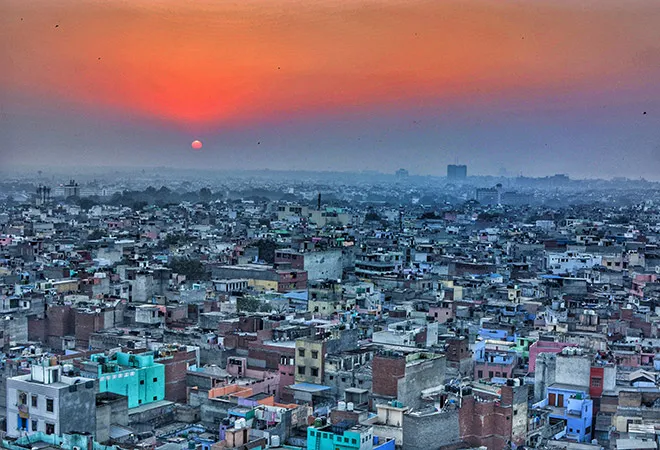-
CENTRES
Progammes & Centres
Location
More capital needs to be pumped into government ventures.

The elections this year were not run on economic issues. While we are aware of the weak state of the Indian economy, there is no dearth of advice on how to revive the economy and kick-start investments. A significant point that must be considered today is that the government will be stable — without coalition partners, or multiple opinions on economic policy.
Economic stability is an important tool for foreign investors as it sends a positive signal with regards to continuity of policies. It is a critical reason why stock markets reacted so well with the Modi government’s victory.
Stability is critical for the government at the Centre. It enables the government to take bold policy steps necessary for the economy’s revival. The Modi government has worked tremendously towards upliftment of the poor over the past five years. This has won the hearts of the people, particularly low-income groups across the country. They view the paternalistic government as a sympathiser of their plight — particularly women, who are grateful for the free LPG Ujjawala Yojana.
Gas stoves have liberated women from the drudgery of collecting wood and using eyesight-ruining biomass and dung as fuel to light fire. The ‘chotu’ gas cylinders have turned out to be extremely popular; they are cheaper to buy as refills. Giving women extra income will enable them to refill gas cylinders easily.
Providing rural women with employment must be in the minds of policy makers. It will also correct the imbalance of women’s participation in the labour force that has been declining at an alarming rate.
Affordable rural and urban housing requires increased public investment. It signifies that the government steps in with the task of mass-scale construction that increases employment in both rural and urban areas. Similarly, improving the market structure, storage capacity and irrigation canals in agriculture will facilitate improvement of the agrarian sector. Storage facilities will enhance the holding capacity of farmers.
The government also guaranteed an annual INR 6,000 basic income scheme for the poor. The proposal was ridiculed as offering only a paltry sum of money, but poor farmers saw it as a source of savings. The government can increase the amount to INR 12,000 which will mean much savings for a family — particularly if the amount is given to the woman head of a household. It will require more government expenditure that can easily be undertaken if it wants to.
Under the first Modi government, 100 per cent rural electrification programme was successfully executed. However, there remain many households without regular supply of electricity. Hence, more investment in bringing uninterrupted power supply to each household in India’s 6.4 lakh villages remains a challenge for the government. Regular power supply will support village crafts and weaving activities, create employment and preserve our timeless heritage in handicrafts that are dying fast because of competition from machine-made, domestic, and Chinese products. It will give women additional income opportunities from craftwork.
Our exports have been languishing — it is time India promoted its exports aggressively. The items that are labour-intensive include: textiles, gems and jewellery and handicraft. The government needs to upgrade the technology of village-based handicraft and food processing industries — and provide access to quality raw materials.
The government needs to invest more in railways, ports, roads and airports to connect rural India with towns and cities. This is required to ensure rural-urban integration, and mainstreaming of current trends and activities in the rural areas. Mobility and migration will become important in the future for the prosperity of villages — and to better transportation and communication. Infrastructure development has to be a top priority of the government for which more money has to be allocated.
The government can no longer shy away from enhancing expenditure in education and health. There will be a negative effect on employment if Indian primary school education does not improve in the next five years; there will not be sufficient skill. The Ayushman Bharat healthcare scheme will also need more funds (INR 12,000 crore have been allocated) to be able to benefit a larger section of the society. In addition, the State governments will have to improve primary health centres.
All in all, more capital needs to be pumped into the government ventures. It will mean increasing government expenditure that in turn may lead to its failure in meeting the target for the fiscal deficit set at 3.4 percent of the GDP. This may be anathema to neo-liberal economists who are strict with fiscal discipline. But does it matter if the government exceeds it slightly at a time when there is a visible slump in demand? Private investment has been sluggish — and probably will remain so — for some time, because of the continuation of excess capacity and pile-up of inventories in industry. The Modi government can fill in the gap by increasing public expenditure that will help resuscitate the economy. The government is not answerable to the IMF anymore — and shouldn’t care much about the crises emerging out of credit rating agencies — when all international institutions like the World Bank, the IMF and the OECD are predicting a high rate of growth for India in 2019-2020. To achieve this, the government may have to rev-up tax collection and not reduce the corporate tax as desired by big industry.
The views expressed above belong to the author(s). ORF research and analyses now available on Telegram! Click here to access our curated content — blogs, longforms and interviews.

David Rusnok Researcher Strengthening National Climate Policy Implementation (SNAPFI) project DIW Germany
Read More +